Aphids
go.ncsu.edu/readext?174734
en Español / em Português
El inglés es el idioma de control de esta página. En la medida en que haya algún conflicto entre la traducción al inglés y la traducción, el inglés prevalece.
Al hacer clic en el enlace de traducción se activa un servicio de traducción gratuito para convertir la página al español. Al igual que con cualquier traducción por Internet, la conversión no es sensible al contexto y puede que no traduzca el texto en su significado original. NC State Extension no garantiza la exactitud del texto traducido. Por favor, tenga en cuenta que algunas aplicaciones y/o servicios pueden no funcionar como se espera cuando se traducen.
Português
Inglês é o idioma de controle desta página. Na medida que haja algum conflito entre o texto original em Inglês e a tradução, o Inglês prevalece.
Ao clicar no link de tradução, um serviço gratuito de tradução será ativado para converter a página para o Português. Como em qualquer tradução pela internet, a conversão não é sensivel ao contexto e pode não ocorrer a tradução para o significado orginal. O serviço de Extensão da Carolina do Norte (NC State Extension) não garante a exatidão do texto traduzido. Por favor, observe que algumas funções ou serviços podem não funcionar como esperado após a tradução.
English
English is the controlling language of this page. To the extent there is any conflict between the English text and the translation, English controls.
Clicking on the translation link activates a free translation service to convert the page to Spanish. As with any Internet translation, the conversion is not context-sensitive and may not translate the text to its original meaning. NC State Extension does not guarantee the accuracy of the translated text. Please note that some applications and/or services may not function as expected when translated.
Collapse ▲Photos by Debbie Roos, Agricultural Extension Agent.
Description and Biology of:
Asparagus Aphid, Bean and Cowpea Aphids,
Cabbage and Turnip Aphids, Melon Aphid,
Green Peach Aphid, Corn Leaf Aphid
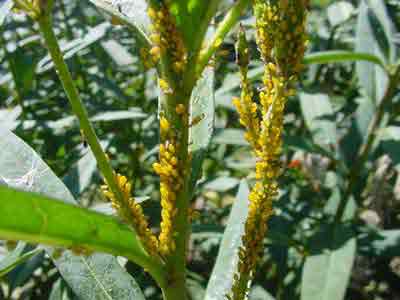
Aphids on Asclepias
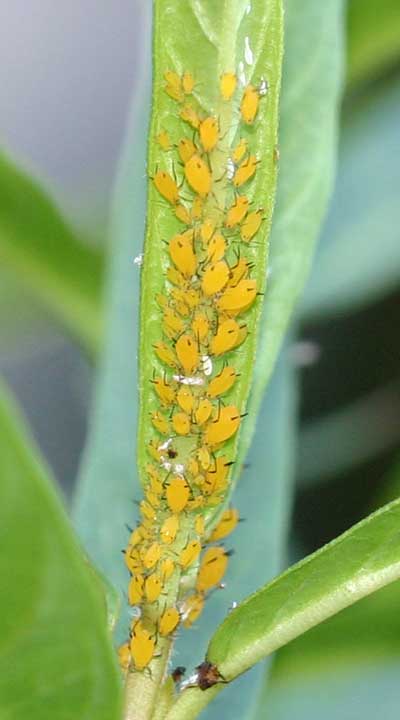
Close-up of aphids on Asclepias

Aphid colony on underside of tomato leaf (note white cast skins)
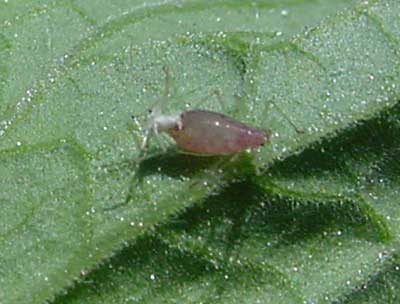
Aphid shedding skin
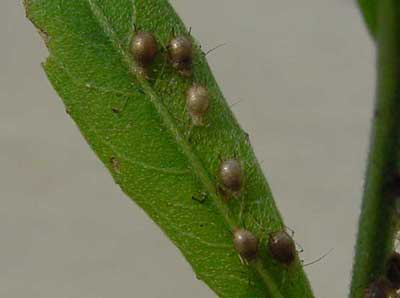
Aphids parasitized by the tiny parasitic wasp, Aphidius
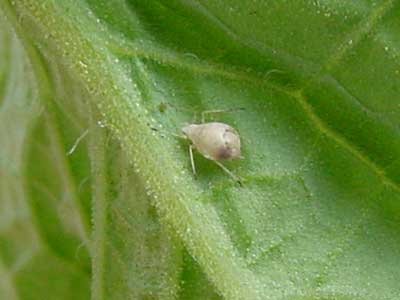
Parasitized aphid mummy with parasitic wasp about to emerge (note outline of exit hole)

Parasitized aphid mummy with parasitic wasp about to emerge (note outline of exit hole)

Aphid parasitized by an Aphelinid wasp; Aphelinidae usually form black mummies
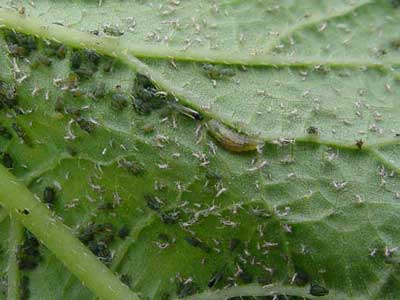
Syrphid fly larva feeding on an aphid colony
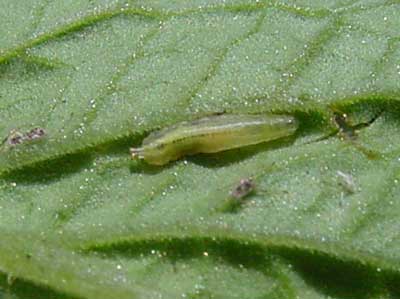
Predaceous syrphid fly larva
Return to Index of Pests and Beneficials


